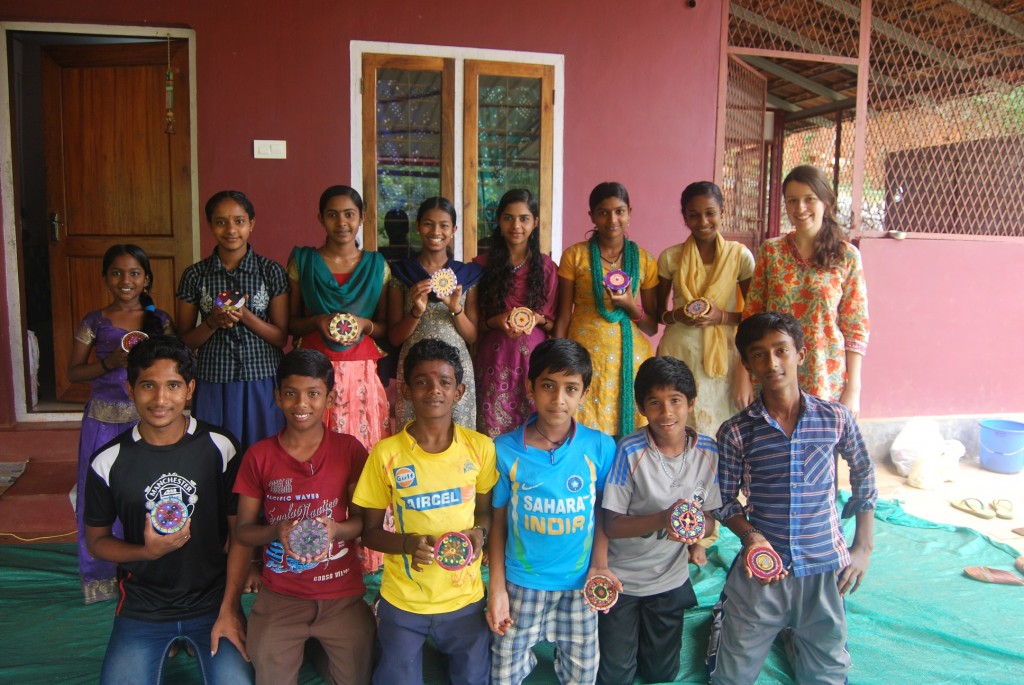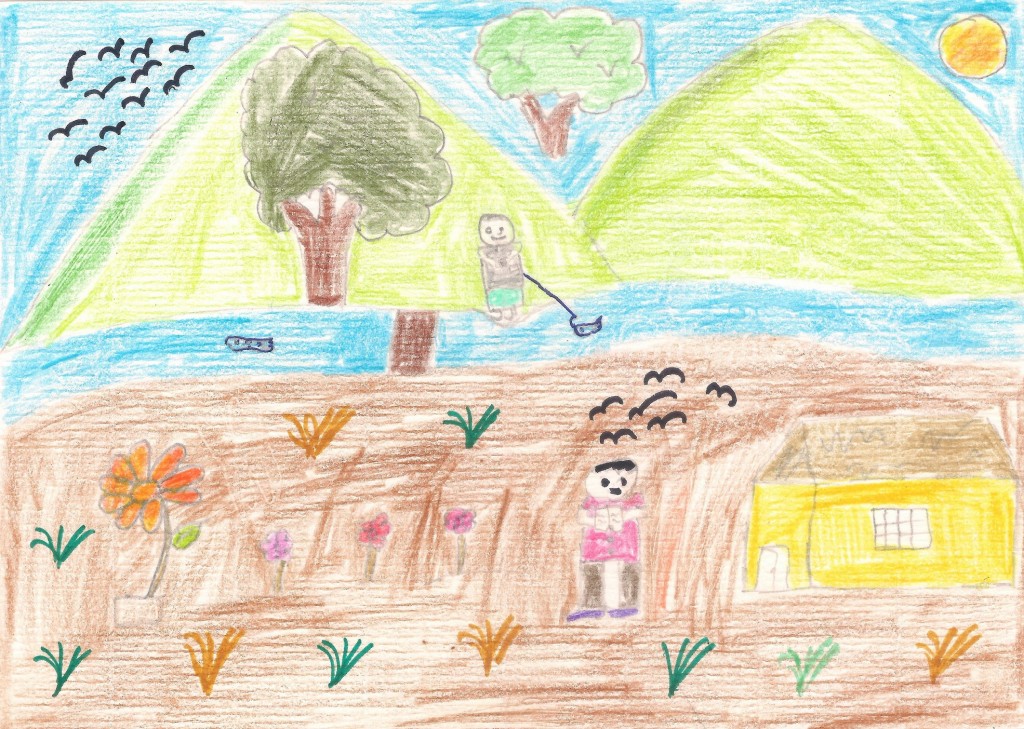 When asked to teach a Summer Art Camp at Profugo’s Center of Development for the kids of the Prashanthagiri village, I was excited, to say the least. At the time, I knew that this opportunity was going to be a complete 180° change for me; although I had lived and worked in India for nearly a year prior to my time in Prashanthagiri, I spent the majority of my time in Calcutta, one of the largest metropolitan cities in the country. Needless to say, the community of about sixty families that Profugo works with is much smaller than my Calcutta community.
When asked to teach a Summer Art Camp at Profugo’s Center of Development for the kids of the Prashanthagiri village, I was excited, to say the least. At the time, I knew that this opportunity was going to be a complete 180° change for me; although I had lived and worked in India for nearly a year prior to my time in Prashanthagiri, I spent the majority of my time in Calcutta, one of the largest metropolitan cities in the country. Needless to say, the community of about sixty families that Profugo works with is much smaller than my Calcutta community.
In my experience, culture shock comes in many shades and varieties. Surely, there is the initial oh-my-goodness-this-is-not-home variety that comes along with the first stages of international travel. But, there are much more subtle shades of culture shock which are characterized by the small surprises of a change-up in your everyday routine, even after having lived in a new country for an extended period of time.
The biggest adjustment I encountered during my time in India this year was the shift from the chaos of urban Calcutta to the rolling hills of rural Wayanad. Not only was the landscape different for me, but the general feel of the community was, too. While walking around the village with Field Fellows Isel and Tyler during my first week in Prashanthagiri, it was incredible to witness their interactions with the community members in the village. We could not walk by more than a few houses at a time without stopping to say hello, to ask about the status of a family’s pregnant cow, or to talk to some children about how they were spending their free time during their summer vacation. Although the Field Fellows’ knowledge of the village families was impressive, the quality of their interactions during that walk around the village was particularly noteworthy for me.
Because I was coming straight from a major metro like Calcutta, where I unfortunately had to be somewhat guarded in my interactions with strangers on the street, it was remarkable to me that a major marker of my success during my time with Profugo would be the relationships I developed with our neighbors. In terms of personal development, it became clear to me that I would have to come out of my shell as a city girl and accept my new role as a member of this small, rural community. What a breath of fresh air for my lungs and my spirit!
As it turns out, my new role – my goal of coming out of my shell and free from my urban-inspired comfort zone – involved helping the children of Prashanthagiri break out of their shells, as well. One of the major obstacles in running extracurricular children’s activities like our Summer Art Camp is trying to get students to participate in “out-of-the-box” thinking. Due to the structure of the education system in India and the sheer logistical constraints on teachers in government schools [like large class sizes and under-resourced classrooms], many Indian students are used to learning via rote memorization. Rather than being challenged to think for themselves, many Indian students are encouraged to think uniformly, in a manner apt for answering exam questions but not useful for the development of critical thinking and problem-solving abilities.
 So, with those observations in mind, my major goal in conducting our Summer Art Camp was to get children to find their creative voices. This was a challenge that involved a multipronged approach, as not only did I have to get the children comfortable with me, a new teacher stationed in Prashanthagiri for a limited time, but also comfortable with expressing themselves freely in a creative manner. All in all, the best outcome of the camp was the ownership that the children took over their work and the pride they had in their final products. Although they were guided through the basics of a project, they were empowered with the ability to choose the content of their work in a way that was frightening to them at first, but eventually proved fun and freeing.
So, with those observations in mind, my major goal in conducting our Summer Art Camp was to get children to find their creative voices. This was a challenge that involved a multipronged approach, as not only did I have to get the children comfortable with me, a new teacher stationed in Prashanthagiri for a limited time, but also comfortable with expressing themselves freely in a creative manner. All in all, the best outcome of the camp was the ownership that the children took over their work and the pride they had in their final products. Although they were guided through the basics of a project, they were empowered with the ability to choose the content of their work in a way that was frightening to them at first, but eventually proved fun and freeing.
For example, my favorite project was one I call the Dream Kite project, which was completed during the second week of our three-week long Summer Art Camp. During this project, students were asked to think about their dreams and goals in a sort of reflective, meditative exercise. They were asked to think about what they wanted to do during their lifetime, or the changes they wanted to make in their community. At first, students were stumped by this exercise. It took some coaxing to get students to dream big – to consider long-term goals, however impossible or farfetched they may have seemed. Students were encouraged to consider themselves free to think about any dream they had, whether for themselves, their families, their village, their state, their country, or their world.
After they had their dreams in mind, the children were told to record these dreams on kites that we made together in class. Before sending our dreams to the sky on our newly-made kites, every student shared his or her dream with the rest of the class artists. As a result of this activity, it was clear that each student walked away from that week’s art lesson with more than a new kite. They were also equipped with the language of discussing goals and dreams, and the encouragement to open up and share these dreams with their friends.

Personally, I think this skill – the confidence to break free from one’s shell in order to find and use one’s creative voice – was the most significant takeaway for the talented participants of our first Summer Art Camp. Hopefully, inspiration drawn from this new-found confidence will act as the wind beneath these children’s kites as they further consider their dreams, artistic and otherwise, for the future.

Leave a Reply
You must be logged in to post a comment.